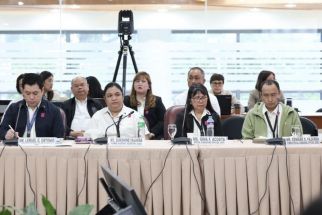SMC gets TRB okay to collect TPLEX toll fee
MANILA, Philippines - The Toll Regulatory Board (TRB) has given diversified conglomerate San Miguel Corp. (SMC) the green light to charge users of the first phase of the P24-billion Tarlac-Pangasinan-La Union Expressway (TPLEX) starting Dec. 8.
Lawyer Edmundo Reyes Jr., TRB executive director, issued a Notice of Toll Rate Implementation for the first phase of the TPLEX that was opened late last month.
The first phase – Section 1A - provides a seamless connection of the Subic Clark Tarlac Expressway (SCTEX) stretching 17 kilometers from Tarlac City to Gerona, Tarlac.
This portion of the toll road would cut current travel time to Baguio by as much as 40 minutes.
It is part of a total 88.6-kilometer TPLEX that would accelerate growth in tourism and trade and agriculture in North Luzon.
From Gerona, TPLEX would have exits in Paniqui and Moncada in Tarlac; Rosales, Urdaneta City, and Pozorrubio in Pangasinan, and Rosario, in La Union.
Completion of the section up to Rosales is scheduled for middle of 2014, while the section up to La Union is scheduled for completion by 2016.
Reyes said the TRB and the Department of Public Works and Highways (DPHW) entered into a Toll Concession Agreement with SMC’s Private Infra Dev. Corp. (PIDC), setting the rates for the use of the toll road.
“In accordance with the Toll Concession Agreement by and among the DPWH, the TRB, and the Private Infra Dev. Corp., the toll pre-approved toll rates inclusive of value added tax are hereby approved for implementation starting Dec. 8,†Reyes said.
Under the approved rates, class 1 users including cars and jeepneys entering La Paz would be charged P30 until Victoria, and P58 until Gerona, while class 2 vehicles including buses and trucks would have to shell out P76 until Victoria and P145 until Gerona.
On the other hand, class 3 vehicles or trucks with more than two axles would be charged P91 until Victoria, and P175 until Gerona.
Reyes said users could file a petition for review within 90 days from the publication of the first notice of toll rate implementation.
Originally designed as a two-lane road, the TPLEX proponents decided to upgrade it to four to enhance efficiency and road safety and anticipate future growth in traffic volume.
These include a fleet of patrol cars and emergency assistance vehicles that can respond to motorists anywhere along the stretch within 10 minutes; concrete barriers, guardrails, lighting and cameras in all toll plazas, signs, and pavement markings with powdered glass beads for enhanced visibility. Speed sensors would also be deployed to ensure motorists keep to the 100 kilometers per hour limit.
Toll plazas in major entry points would also be equipped with electronic card dispensing machines. All installations would be fiber optic, Internet-enabled.
Culverts that were constructed at strategic points throughout the expressway were also recently proven to be effective, as the tollway remained flood-free despite the heavy rains brought on by successive low-pressure areas and typhoons last September and October.
Since its diversification to infrastructure, SMC has been aggressive in pursuing much-needed road projects. In April this year, SMC won the concession to build and operate the NAIA Expressway with an upfront cash offer of P11 billion on top of the P16-billion cost connecting the Skyway system to all three NAIA airport terminals and to the Entertainment City of PAGCOR in the City of Manila, and the Manila-Cavite Expressway (Cavitex).
SMC is also set to start construction of Skyway Stage 3 worth P26.5 billion connecting Makati to the North Luzon Expressway and decongest major thoroughfares such as EDSA.
- Latest
- Trending
































